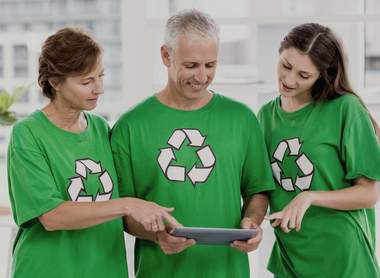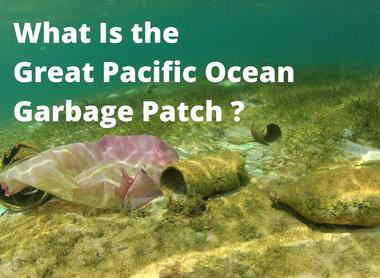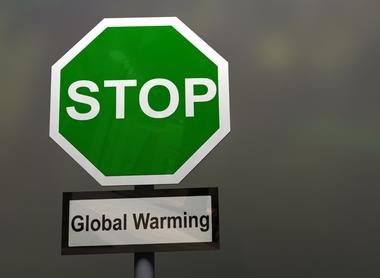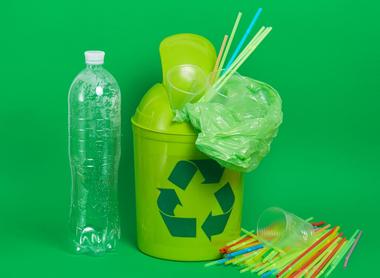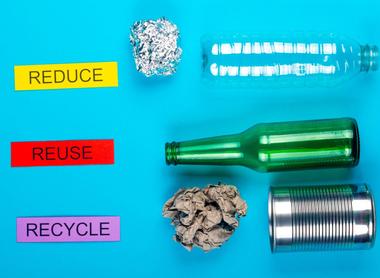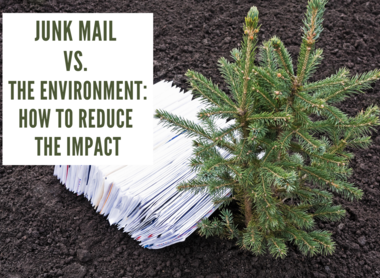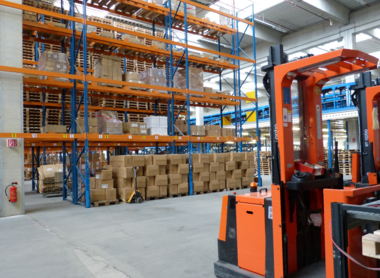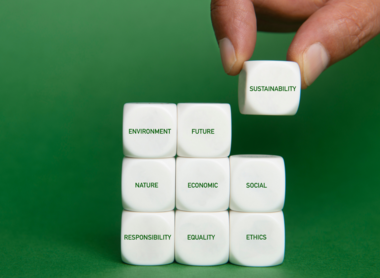Personal Steps You Can Take to Fight Global Warming
Despite the claims of one ex-US president, global warming is a phenomenon that scientists are absolutely certain is taking place, and that will have utterly devastating and catastrophic consequences for many forms of life on earth if we don’t do something about it, and quickly. Although such an enormous issue may feel daunting to tackle, and that individual action won’t make a big change, there is actually quite a lot that we can all do individually at home, and at work to help the situation. In this post, we’ll be looking into what global warming is, why it is a problem, and the things you can do at both home and at work to help to tackle the issue.

What is global warming?
In short, global warming simply means that our planet is getting hotter, and the human race are wholly responsible for it. Since the late 19th century, the temperature of the earth has increased by around 0.8°C. That might not seem like a huge amount, but experts consider that a rise of just 2°C will have an utterly devastating impact on the planet. Unfortunately, within the next 100 years temperatures could rise by as much as 4°C.
What caused global warming to happen?
Greenhouse gases that have been released into the atmosphere by human activity since the Industrial Revolution are to blame for most of the problem. The ‘greenhouse effect’ – the warming of the planet that happens when gases in the atmosphere trap heat that would normally escape into space – is caused by certain gases that prevent the heat from passing through. These gases have been created by different farming methods, and the burning of fossil fuels for power and travel.
Which gases are to blame for the greenhouse effect?
There are five main gases that are causing the greenhouse effect to worsen, and that we need to address:
Water vapour is caused by many natural causes, but having more non-condensable gases in the atmosphere means that more water vapour gets trapped alongside them in the atmosphere. It currently accounts for around 60% of the warming effect, although if the amount of other gases in the atmosphere hadn’t risen, then the amount of water vapour in the atmosphere would likely not have risen either.
Nitrous oxide is caused by soil cultivation practices, particularly the use of both commercial and organic fertilisers. Other causes of nitrous oxide include fossil fuel combustion, biomass burning and nitric acid production.
Methane is created by natural sources, such as ruminant digestion and manure management from domestic livestock (cattle), and agriculture (particularly rice). Methane is a more active gas than carbon dioxide, but there is a lot more carbon dioxide in the atmosphere. Methane in the atmosphere is a key reason that people that are concerned with the environment are choosing to become vegan – to reduce the number of livestock that are required to feed us, and to bring methane levels down.
Carbon dioxide is released through many natural processes, such as breathing and volcano eruptions. The issue with CO2 is with man-made issues including deforestation (since vegetation and plant life absorbs carbon dioxide through photosynthesis), changes in the use of land, and of course – the one we are all aware of – the burning of fossil fuels for power and transportation. The concentration of CO2 in the atmosphere has increased by 48% since the Industrial Revolution started.
CFCs (Chlorofluorocarbons) are created for industrial purpose in the 1930s. They are incredibly damaging, and were found to have been largely the cause of the hole in the ozone layer. Thankfully, the use of CFCs have now been heavily regulated, due to the hole in the ozone layer. The Montreal Protocol, established in 1990, banned industrialised countries from using them completely by the year 2000, and developing countries were banned from using them from 2010. These actions mean that the ozone layer has been observed to be slowly recovering. While this is good news, we need to tackle the problems that the other gases are creating to prevent further warming taking place.

Why is global warming a problem?
We’ve heard some people say things like “well, I won’t be here, so why should I care?”, or that they aren’t to blame for the problem when there have been discussions about global warming. That’s a pretty selfish way to think about the issue – but realistically, we’re already seeing the impact of global warming, and the effects will start to be seen more quickly than many people assume.
Some of the effects that are expected to be seen if global warming isn’t tackled quickly include:
Higher temperatures worldwide. While many of us in the UK might think that just a few degrees warmer would make us a bit more comfortable in the winter, this is not good news. Severe heat waves will also be an effect of the higher temperatures, and since even an increase of 2°C would cause melting of the polar ice caps, the planet would be severely at risk of our next effect:
Sea levels rising. Experts predict that by the end of the century (which is less than 80 years away, so will definitely impact today’s children) the global sea levels will have risen between 0.7 and 1.2 metres on average if we haven’t taken significant action. That might not seem like a lot, but for low regions, that don’t go much above sea level, that means huge chunks of land being claimed by the sea – with the wildlife that lives there.

Droughts and floods would be much more common. We can expect wet seasons to see more rain, and flooding as a result, and dry seasons to become even drier.
Extreme weather including hurricanes and tropical cyclones with increased wind speed and much more rainfall. As a result, an increase in storm surges and more intense flooding would be expected.
Famine may become more common as a result of increased heat and drought making it harder to grow crops and raise livestock. An increase of just 1°C would make it harder to grow wheat, corn, and rice, especially in tropical climates.
Extinctions are likely to become more commonplace as it will be hard for plants and animals to adapt or move their habitats. There’s a significant risk of a mass extinction event taking place before the end of the century.
Huge changes to the world as we know it are likely to occur within the next century, including rising temperatures. This will lead to issues such as the polar ice caps melting, pushing sea levels up, and the need for urgent mass migration of human, animal and plant species if they are to survive.

Humans will experience more allergies, breathing difficulties such as asthma, and infectious diseases will become more common. This is due to the increase in pollen and air pollution, and the warmer and wetter conditions will encourage growth of pathogens and disease-carrying insects such as mosquitos.
Society will experience more inequality. When major changes occur, groups of people experience the situation in different ways. Groups that already experience inequalities, or that are already economically marginalised are likely to experience global warming in a much more severe way, despite the fact that many of these people will have contributed the least to the problem.
Shouldn’t governments and big businesses deal with global warming?
Absolutely – but placing blame and avoiding personal responsibility won’t help to heal our planet. While there is a lot to be done, many governments, corporations and other organisations are coming together to find solutions for issues such as plastic waste, investing in finding sustainable alternatives to fossil fuels and so on.
The UK government has committed to reducing carbon emissions by 78% by 2035, with the aim of being on the path to net zero by 2050. This is at the fastest rate of any major economy. The country is expected to end the use of coal to generate electricity by 2025, with more renewable energy being used. There are plans in place to end the sale of petrol and diesel cars by 2040, but WWF UK is pressuring the government to bring that date forward to 2030.
The US has rejoined the Paris Climate Agreement, after the Trump administration withdrew from it, with the current president Joe Biden promising to get the country back on track in terms of the environment. Even though the Trump administration set the US back, local and state governments continued to work on improvements that would have a positive impact on the climate, such as the American Cities Climate Challenge and the Regional Greenhouse Gas Initiative. Renewable energy is on the up too, with more power being created from energy sources like wind and solar than coal for the first time in 2020.
The EU has a huge plan for fighting climate change, with the European Green Deal at the heart of the measures that will help to cut greenhouse gas emissions, and invest in research and innovation to help repair the damage already done.

Will my personal steps to fight global warming make a difference?
Absolutely. We’ve said it before, and we’ll stand by it – saving the planet isn’t possible unless we all do our best. If we all take steps towards reducing our impact on the planet by reducing waste, (even if we don’t manage to do it perfectly every time) then we will all be a lot better off in the years to come, and we’ll be making financial savings for ourselves in many cases too.
What can I do at home to fight global warming?
While we can do our best to influence others to make changes for the benefit of the environment, we only have full control over our own homes. Our homes in the UK currently create about 20% of environmental emissions, with 21 million homes at below EPC rating C, so they are not efficient. In this next section, we’ll talk about how to minimise the contribution of your home to global warming. Some of these actions are more expensive than others – but taking every step that you can makes a difference.
Prepare your home
Depending on where you live and the season, keeping your home warm or cool can make a huge impact on the environment. Take steps to minimise the amount of power you need to keep your home comfortable. This might mean adding insulation in the loft, adding insulation around doors and windows, and replacing old single-glazed windows with efficient double glazing (or adding cost-effective temporary secondary glazing, if your situation doesn’t allow for double glazing).
Adjusting the temperature of your home during the night, and when you’re out during the day means that the impact of your home will be much lower. Turning the thermostat down by just two degrees in winter can save thousands of pounds of carbon dioxide – and will save pounds on your bills too.
Replace lightbulbs
When a lightbulb gives up, switch them out for the most energy efficient option you can find. This usually means LEDs – and not only do they use less power, the bulbs themselves last longer too, so the manufacturer won’t need to make as many in the long term. If we all do this, we’re helping to save power that the manufacturers would have been using too!
Choose energy efficient products
There will always come a time that you need to replace items – whether it is a new car, a new washing machine, or simply a light bulb. Choosing the most energy efficient options will help the environment, save money in the long term, and when you’re buying items for the home, look for products that don’t have excessive packaging – particularly if the packaging that is used is single use. In the case of household appliances, many retailers will take your old item away for recycling, and the packaging too.
Optimise water use
There are so many ways that you can conserve water in your home. These methods don’t just help the environment – they are great ways to save on your water bills, particularly if you have a water meter installed.
As a rule, you should be conscious of how you use water, and only turn the tap on when necessary. A great example is not leaving the tap running when you are cleaning your teeth. In the bathroom, you can also add a water saver device to your toilet – this will save litres of water every time you flush – and remember, when it comes to hot water usage, the demand on the environment is even higher. Take fast showers, rather than baths. Standard shower heads use around four litres of water per minute, which means a 10 minute shower uses 40 litres, whereas a bath filled to around a third needs around 75 litres.
In the garden, it can be tempting to use hosepipes and sprinklers, but capturing rainfall in water butts and using that to water with is a much better way to water in the hotter months. Rain water is actually better for your plants too!
Switch off whenever possible
Don’t leave electrical equipment on standby – just keeping that red dot on your TV increases the amount of energy that you’re using. It might only be a tiny amount, but if we all switch off completely, it all adds up. If you’re unable to access the socket easily, then add a smart plug that allows you to turn the plug off through an app on your phone or through a smart device.

Do an energy audit on your home
There are a number of government incentives for UK home owners to receive grants for energy efficient work to be completed on their homes, while some companies offer auditing to help identify where you can make environmental improvements and save money.
Change your energy provider
Choosing a utility company that gets at least some of their power from renewable energy sources is a great way to support the environment, and many of the green energy suppliers are cheaper too. Some of the best companies to start your search with include Bulb, Octopus and Green Energy UK. These are smaller companies, but if we all made the switch, the bigger companies would quickly follow! You can read more about the other green energy providers, and the pros and cons of each here.
Install solar panels
If your home has a mainly south-facing roof, then installing solar panels on your roof can generate up to 3,800kWh per year. You may need planning permission to install them, so you should check with your local council to see if this is necessary for your home. While generating your own power for your home sounds like a great idea – and it is – unfortunately, they’re not cheap. On average, solar panels in the UK cost around £5,940 – although this has become more affordable in the past five years, with prices dropping by around 25%. A family of four could save up to 1.14 tonnes of carbon dioxide in a year – which is about the same amount as a single economy class passenger on a return flight between London and New York.
What can I do day to day to help fight global warming?
It isn’t just the running of your home that you can take steps to minimise your impact on the environment. There are things that you can do in your day to day life to prevent further global warming.
Avoid single use items
We spoke at length previously about the problem of plastic pollution – and avoiding single use plastic is the biggest step we can all take to halt the damage to our planet. Investing in a great reusable water bottle that suits your needs, bringing reusable cutlery and metal straws are easy steps to make to eliminate unnecessary plastic use from your daily life.
Reduce, reuse, recycle
We have probably heard this mantra at some point over the past few years. By minimising single use waste, and using reusable items we can help the planet simply by using less.
Recycling should be easy for much of the waste your household generates. Paper, glass, food and drink tins, and some plastics are widely collected by local councils, while other types of plastic can be taken to be recycled in collection bins in supermarkets.
Rechargeable batteries are an option for battery operated items, but if you end up with empty single-use batteries, there are collections for these in many supermarkets and retail outlets too.
When it comes to clothing, buying quality items over quantity means you will need to buy fewer items, and quality items last for much longer. If you’re a fashion addict, then try scouring second hand, vintage and charity shops for items that suit the trends, or that can be altered.

Take the best travel option
The best way to travel – particularly for short journeys – is by walking or cycling. Not only is it better for the planet, but it is also better for your health, and your wallet! Where that isn’t possible, then public transport is the next best option.
If you must drive to get to a destination, wherever possible try to share the journey. Carpooling is really popular, and many companies run schemes that allow you to find others in your local area to share journeys with. In many cases, businesses offer incentives to commute this way, but you’ll benefit financially too. It just makes sense!
Don’t just hop in your car and go – like your home, you need to keep your car running as efficiently as possible. That means checking tyre pressures regularly, having services with oil changes, and MOTs to ensure emissions are low, and so on.
When it comes to international travel, planes have been the norm for a long time – but there are alternatives that are less impactful, and provide an incredible experience. If you’re travelling over land, then rail travel is a great way to see landscapes and views that you simply can’t see by plane. For international journeys, boats, ferries, coaches, or a combination of these methods can increase the personal value of your travels, reduce the cost to the environment, and can be much cheaper than travelling by plane too.
Plant trees
If you have a garden, then planting trees should be on your agenda. Photosynthesis means that all types of trees and plants absorb carbon dioxide – and each tree absorbs around one ton of carbon dioxide through its lifetime.
If you don’t have a garden, you can contribute to the planting of trees by contributing financially to organisations that do plant them, but even easier is to plant trees for free by using the Ecosia browser extension. Simply add the extension to your web browser, then use it when you need to search for something online. You’ll get the same results as you would by going directly to Google, and Ecosia uses income from search ads to plant trees around the world.

Consider your diet
Vegan lifestyles are more popular than ever, and they have been shown to dramatically reduce the impact of our diets on the environment. Veganism isn’t for everyone, but choosing more plant-based products, and eating vegetarian food several days a week will help to minimise the effect of your diet. Choosing seasonal produce, opting for locally grown (and in the case of meat, locally reared), and organic where possible will help further too.
Compost food waste
When food waste is added to landfill, it tends to release methane gas – which, as you’ll remember, is one of the problematic gases when it comes to global warming. However, when food waste is composted, it doesn’t release that gas – and so composting can help to lower the impact of those leftover scraps on the environment. Not only that, as compost breaks down and becomes soil, it is full of nutrients, meaning that you can minimise the need for chemical fertilisers.
Eliminate junk mail
We wrote a whole blog post about how you can stop junk mail making it to your door in this post, and this is another great way to minimise waste. Don’t just stick it in your recycling – decline marketing materials with companies by opting for paperless billing, tell the company to stop sending you mail, use postal service preference services, and return it to the sender if you can’t get them to stop sending.
What can I do at work to fight global warming?
Many of the steps you are taking at home can be implemented at work, but with a little help from your employer, you can make things a little better too. Every business is unique, and of course these steps won’t be right for each company, but for those of us in traditional offices, these are some good first steps.
Ask for a filtered water fountain
Getting a water filtration system saves money on buying in water that is provided in large plastic bottles, and means that (as long as the water supply is on!) you’ll never run out. Then, the business can provide glasses, or branded reusable cups for each employee, and the need to use single use plastic for water should be minimised.
Recycling should be standard
Just as at home, any materials that can be recycled should be. That means drinks containers, essential papers and any food items that can be recycled by local council collections should be kept separate from food waste and so on.
Employees should be encouraged to be paperless as much as possible, but if your business has confidential paper waste that needs to be processed, be sure to choose a shredding service that recycles, rather than adding to landfill or incinerating.

Switch out lighting
Just as at home, there are environmental benefits, as well as financial savings to be made by switching to LED lightbulbs and energy saving options. Not only that, but LED lighting also has a much wider range of colour temperatures, meaning that you can choose exactly the right type of lighting for the type of activity in each room. If you’re going to change all of your lightbulbs at once, the business may be able to apply for, and receive grants or other governmental assistance to make the change.
Encourage remote working where possible
The COVID-19 pandemic illustrated to many employers just how much can be done from home. Businesses didn’t fail – and many of us expect the trend for home working to continue, at least in part, once restrictions ease completely. Home working has so many benefits for both the business, and employees, as well as the environment – particularly in terms of keeping cars off the road. Where remote working isn’t possible, car shares should be encouraged.
Improve air quality with greenery
Having plants dotted around the office can do wonders for the look and feel of your space, but it can also help the quality of the air – and there are certain plants that are great for helping to remove toxins such as mould and chemicals in the air. English ivy, snake plants and spider plants are relatively easy to keep and will help keep the air feeling fresh, but you can find out about other options – with more colour – in this post.
Power off, not sleep
Although there are some situations where PCs must be left on to complete tasks overnight, for most workers that is simply unnecessary. Employers should make it the norm for equipment such as printers, copiers, and screens to be switched off completely overnight and at weekends too.
Minimise business travel
As we’ve already mentioned, many businesses have been forced to pivot to remote working during the pandemic, and that has included conferences and trade events. With that in mind, businesses should consider whether travel is necessary, and where it is deemed to be essential, the most sustainable travel option possible should be chosen.
Where product demonstrations and so on can take place using online meeting solutions like Zoom, that should be the preferred option, rather than travelling to client locations.
How can I get other people to take steps to fight global warming?
You’ll probably find that there are many others that are concerned about the environment and the effects of global warming already, but wanting to get others on board is a great thing! Here’s how you can start to influence people to take even bigger steps to benefit the planet.
Encourage your family and friends to join you
Showing the people around you the steps that you have taken is likely to inspire them to do the same. Sometimes, ‘saving the planet’ isn’t quite enough to encourage people to act, so highlight the benefits to their life specifically. Will it save them time? Does it make something easier? Most importantly, will it save them money? Those kind of motivating factors are more likely to encourage people to take action – because it is win-win for them personally, and for the planet.
Talk about choosing sustainable on your social media
If you’re already on social media and you’re making changes, then sharing what you’re doing – especially where it is easy for people to make similar changes – is likely to result in others following your example. Once you’re sharing what you’re doing with friends and family, you can do the same with your social media. Be sure to boost the amount of people seeing your posts by using hashtags, and tagging brands that you are talking about, particularly where you are talking about a great product. If you’re building your social media for personal, or financial reasons, you’ll benefit from doing this too.
Petition governments and companies
It has never been easier to influence and encourage organisations and people in positions of power to take action on your behalf. If you’re not in a position to make donations to environmental charities, this is a great way to help ensure that things get done.
Signing petitions to encourage change is simple – Change.org has thousands of petitions that you can add your name to, and all you need to do is to ensure that you click the links in their email to confirm that you’re a real person. If you want to help further, you can either make financial donations towards the cause, or you can share the petition on your social media channels – which will encourage your followers to sign too. Once you’ve signed the petition, contact your MP to encourage them to take action too – remember, they work for you!

Our final thoughts
Whatever you can do is worth doing – even if it is as simple as switching to a reusable water bottle to start with. Once you’ve started to make changes, you won’t only be contributing to the recovery of our planet, you’re likely to see financial benefits too – which most of us are pleased to see! As you take further steps, and you become more confident in your knowledge, you might start to pressure governments and businesses to take further action on behalf of all of us. We’ve all got our part to play in reducing the impact of our daily lives on the environment – so start today, to help to ensure the health of our planet for our future.
Last Updated on July 6, 2021





